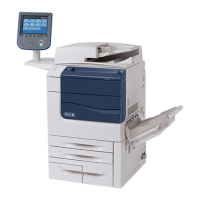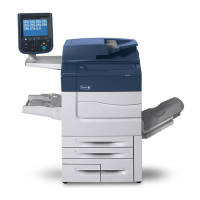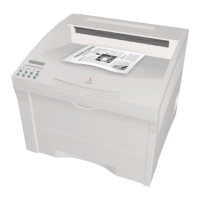basic
processor to
execute
the
contents
of
the
assigned
interrupt
location
as
the
next
instruction.
(Interrupt
loca-
tions
are
defined
in "Physical
Organization
ll
,
later
in this
chapter.)
The instruction address portion
of
the
program
sta-
tus words
(PSWs)
remains
unchanged
until
the
instruction in
the
interrupt
location
is
executed.
The instruction in
the
interrupt
location
must
be
one
of
the
following: XPSD, PSS, MTS, MTH, or MTW.
If
the
execu-
tion
of
any
other
instruction in
an
interrupt
location
is
at-
tempted as
the
result of
an
interrupt
level
advancing
to
the
conditions
for
acknowledgment,
an
instruction
exception
trap
occurs.
The use
of
the
privileged
instruction XPSD
or
PSS
in
an
in-
terrupt
location
permits
an
interrupt-servicing
routine
to
save
the
entire
current
machine
environment.
If working
registers
are
needed
by
the
routine
and
additional
register
blocks
are
avai
lable,
the
contents
of the
current
register
block
can
be
saved
automatically
with no time loss. This
is
accomplished
by
changing
the
value
of
the
register
pointer
(using the LOAD
REGISTER
POINTER
instruction),
which
results in the assignment
of
a new
block
of
24
registers
to
the
routine.
The instruction LOAD
REGISTER
POINTER
(LRP)
is
described
in
Chapter
3,
"Control Instructions
ll
•
An
interrupt
level remains in
the
active
state
unti I
it
is
cleared
(removed from
the
active
state
and returned
to
the
disarmed or armed
state)
by the
execution
of
the
LPSD,
PLS,
or
WD
instruction.
An
interrupt-servicing
routine
can
itself
be
interrupted
(whenever a
higher
priority
interrupt
level
meets
all
the
conditions
for becoming
active)
and
then
con-
tinued
(after
the
higher
priority
interrupt
is
cleared).
How-
ever,
an
interrupt-servicing
routine
cannot
be
interrupted
by
an
interrupt
of
the
same
or
lower priority
as
long as
the
higher
priority
interrupt
level remains in
the
active
state.
Any signals
received
by
an
interrupt
level in
the
active
state
are
ignored.
Norma lIy,
the
interrupt-servicing
rou-
tine
clears
its
interrupt
level
and
transfers program control
back
to
the
point
of
interrupt
by means
of
an
LPSD
instruc-
tion with the same
effective
address as the
XPSD
instruc-
tion in the
interrupt
location.
DIALOGUE
BETWEEN
THE
BASIC
PROCESSOR
AND
THE
INTERRUPT
SYSTEM
DURING
AN
INTERUPT-
ENTERING
SEQUENCE
When
an
interrupt
level is
ready
to
be
moved
to
the
active
state,
a
dialogue
takes
place
between
the
interrupt
system
and
the
basic
processor. This
dialogue
takes
place
over
the
processor bus
and
involves
the
Processor
Interface
(PI)
asso-
ciated
with
the
processor
cluster
of
which
the
basic
proces-
sor
is
a member. When
the
processor bus becomes
available
and
the
b(lsic processor
is
at
an
interruptible
point,
the
in-
terrupt
system transmits
the
interrupt
address to
the
basic
processor.
It
initiates
its
interrupt
actions
(i.e.,
executes
the
instruction in
the
interrupt
location
and
services
the
interrupt
at
the
appropriate
time to
avoid
race
conditions,
and
communicates with
the
interrupt
system with
an
indi-
cation
to move the level
to
the
active
state.
This
latter
32
Centralized
Interrupts
transmission
is
delayed
unti I
the
new
inhibit
states
of
the
basic processor
are
known; these
states
are
transmitted to
the
interrupt
system so
the
latter
can
record
the
new basic
processor
status.
DIALOGUE
DURING
AN
INTERRUPT-EXITING
SEQUENCE
When
the
basic
processor
exits
an
interrupt-servicing
rou-
tine,
it
must notify
the
interrupt system to move
the
interrupt
level
associated
with
that
routine from
the
active
state
to
either
the
armed
or
disarmed
state.
To
do
this
it
must
gain
access
to
the processor bus
and
the
interrupt
system,
either
of
which may
be
busy
at
the
time
access
is
requested.
When
communication
with
the
interrupt
system
is
established,
the
basic
processor transmits information for
setting
the
level
state
to
armed
or
disarmed,
and
new
inhibit
states
it
has
as-
sumed as a result
of
the
exit
operation.
PHYSICAL
ORGANIZATION
Up
to
62
interrupt
levels
are
avai
lab Ie,
each
with a
unique
location
(see Table 2) assigned in
the
System Control Pro-
cessor,
and
with a
unique
priority.
The
basic
processor
can
selectively
arm,
enable,
or arm
and
enable
any
interrupt
level.
The
basic
processor
can
also
IItrigger"
any
interrupt
level (supply a signal
at
the
same physical
point
where
the
signal from
the
external
source would
enter
the
interrupt
level).
The
triggering
of
an
interrupt permits testing
spe-
cial
systems programs
before
the
special
systems
equipment
is
avai
lable.
The
basic
processor
also
permits
an
interrupt-
servicing
routine
to
defer
a portion
of
the processing
asso-
ciated
with
an
interrupt
level by processing
the
urgent
portion
of
an
interrupt-servicing
routine,
triggering
a lower
priority level (for a routine
that
handles the less urgent
part),
then
clearing
the
high-priority
interrupt
level so
that
other
interrupts
can
occur
before
the
deferred
interrupt
re-
sponse
is
processed.
INTERRUPT
GROUPS
Interrupt levels
are
organized
in standard group
configura-
tions
that
are
connected
in a predetermined
and
fixed
pri-
ority
chain
(see Table 2 and Figure
11).
The priority
of
each
level
within
a group
is
fixed; the first level has
the
highest
priority
and
the
last
level
has
the
lowest.
INTERNAL
INTERRUPTS
Standard
internal
interrupts
are
provided with the system
and
include
all
group D levels (internal
override,
counter-
equa
Is-zero,
and
I/O).

